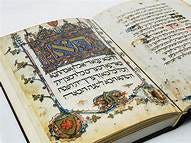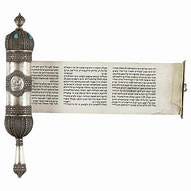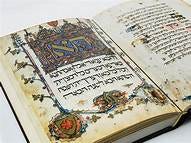Esther & Exodus
The strangest thing happened during my preparation this week for the reading of the Haggadah, the account of the Exodus from Egypt. I forgot what story I was reading. Oh, it’s not that I was having what some might call a “senior moment.” I was fully aware of the book of the Bible I was studying. It’s just that as I was immersed in the Passover story, it occurred to me that I was also reading about the Purim story.
In fact, the more I thought about it, the more it occurred to me that the stories of Purim and Passover are too similar to be accidental. From the topologies of the characters to the plot and sub-plots to the outcomes of the stories, they parallel one another. Only the names have been changed to protect . . . who knows what!
Similarities
For example, Haman, the wicked man in the Purim story, and Pharaoh, the evil enslaver of the Hebrews in the Haggadah, are of the same genre. Each was the acting ruler of a vast empire. Each had the power of life and death over the Jews. Each was filled with himself to the extent that he imagined himself a god worthy of and entitled to obedience and subservience by the populace. Remember, everyone was required to bow down to Haman, and Moses had to beg Pharaoh for even a brief few days for his people to go and worship. Neither Haman nor Pharaoh were sensitive to the plight of others. Both ignored the ample warnings given them that their doom would be sealed if they did not change their ways. Pharaoh ignored nine plagues – actually all ten, while Haman ignored the “plague” of having to escort Mordecai around the city streets while shouting out the words “Thus shall be done to the man whom the king wishes to honor.” Words of praise for one’s enemy must taste like the bitterest of herbs.
The next two equivalents are Esther and . . . Moses! They are both the Jew in the palace. As Moses had been “found” by a princess who had access to the court, so Esther was a foundling raised by a relative who had connections at court. The name Esther means “I shall hide.” Actually, her real name is Hadassah, which means “myrtle.” On the whole, I prefer the hiding name! Esther’s Jewish identity remains hidden for much of the story. It remained a secret until she divulged it to the king in order to save her people. Likewise, we don’t know Moses’ original Hebrew name. We only know the name given to him by the Egyptians. Moses means one who is “drawn out of the water.” It is, in part, the name of the Pharaoh in whose palace he was raised – Ramses, or better, Ra-Moses, which probably means something like “the one who draws the god Ra out.” He was three months old when he received the name Moses. What was his Hebrew name – the one he must have received before he was placed as a three month old in the basket in the Nile? We have no idea. Moses like Esther must have kept his Hebrew identity under wraps; he must have lived it “secretly,” i.e., on the fringe of Pharaoh’s palace. After all, he is already 40 when he first goes out and sees the oppression of the Hebrews?! Where had he been all those decades?
The other element that both Moses and Esther have in common is that they are both reluctant actors. Despite hearing God’s voice at the burning bush, Moses deflects the invitation to rescue his people. He demurs . . . he can’t speak, he stutters, he doesn’t know how to use his staff, he needs to see some of God’s magic stuff, etc. Esther, too, hesitates. The king could put me to death if I appear without an invitation. I can’t, I shouldn’t . . ., etc.
The first of the next pair to be compared is Mordecai. He is the prototypical Jew – the watchman of the community, the one who is always aware. At first, he ferrets out a plot to kill the king, and then he discovers Haman’s plot against the Jews. He is a listener at the city wall, a guardian. He is certainly like . . . Joshua. Both of them are charged with keeping an eye out for the Amalakites. In the wilderness, the Amalakites picked off the weak and the stragglers of the Hebrews. Joshua, as the military leader of the people, had to look out for them. And, similarly, Mordecai had to keep an eye peeled for Haman, who was an Amalakite! Joshua as a watcher, kept the people away from Mt. Sinai while Moses went up to get Torah, and he was one of the men who spied out the land, but unlike the ten who came back with a pessimistic report, Joshua encouraged the people to go to Israel immediately, not in 40 years. Mordecai, likewise, had to convince Esther that despite the risk, she must use her connection with the king to save her people right now. So Mordecai and Joshua both encourage their people to act, fight, and defend themselves.
Vashti is the queen who wouldn’t . . . or perhaps the queen who couldn’t. Indeed, in stories in which most people take assumed names, Vashti might not have been her real name either. Instead, the name might have been a hint at her condition. There are very few Hebrew names that begin with a vav, a V. It would be similar to the paucity of English names that begin with an X. Therefore, when we see such a name it should already alert us to look carefully. In Hebrew, the word veset refers to a woman’s monthly cycle. Perhaps this word is just similar enough to hint that Vashti refused to appear before the king because at this time of month she could not appear scantily garbed in public. Her refusal to dance at that moment might have been less a matter of moral choice than of personal modesty. Of course, Vashti has several counterparts in the Exodus account: one is Miriam – the sister of Moses. Miriam does dance, but only after the waters of the Red Sea close (symbolically, perhaps, after her cycle ends). And there is the populace that dances with abandon around the golden calf. That scene might be reminiscent of the drunken party that the king held to which he invited Vashti to dance. So we see that dancing can be a dangerous activity . . . and not dancing can be even more so. And there are two other women who like Vashti refuse the order of a ruler – Shifra and Puah, the midwives who save Hebrew boy babies, despite the Pharaoh’s order to put them to death. They skillfully danced around his decree.
And the final character of note in the Purim story is the king, Ahasuerus, whose parallel in the Exodus account is . . . God. One wonders why God is missing from the Purim story. Never once in the story is the divine presence noted or mentioned. This has always been a puzzlement. Why no God? And without God, why is this story included in the Tanach? Well, I find God hidden in the persona of the king. Perhaps this is an act of cynicism on the part of the author. Perhaps this is an act of theological conceit. Regardless, what the author seems to be saying is that in both stories, God is preoccupied. In the Purim story, the divine is less a ruler than a hedonist and an entertainer. The king is a party giver and a lush. He has little if any interest in the workings of his enormous empire. He willingly turns control of his subjects over to a malevolent person. We have seen this theme in the book of Job wherein Satan is “given” free reign to test, torment, and almost destroy a man who is “faithful” to God.
Likewise, in the Exodus account, the Hebrew slaves suffer far too long before God gets with the program. And even after deciding to act, God takes time to call Moses, prove the divine prowess, show off some tricks with snakes and staffs and dust and blood. Then, God goes through the motions of proving to Pharaoh who’s the most powerful, who’s boss. In both accounts, the rescue almost delays too long because either God in the Passover account or Ahasuerus in the Purim account seemingly wasn’t paying attention. Remember, it was Moses who first noted the evil of the enslavement of the Jews. In the Purim story, it is Mordecai who has to inform a palace insider, his niece the queen, about the evil plot of Haman.
We’ve seen some of the similarities between the two stories. Now, I ask, what are the differences between the stories and why are both stories necessary?
Differences
First:
The Purim account is about endings while the Exodus story is about beginnings.
∙ Purim falls at the very end of the Jewish year – in Adar, the 12th or 13th month. It is a winter story and, therefore, has no agricultural aspects.
∙ By contrast, Pesach is the first holiday of the Jewish year, occurring in Nisan (or Aviv, spring as it is called in Exodus 13:4), the first month, making Pesach the first holiday of the Jewish year. It is a spring story and is, therefore, loaded with agricultural symbols – unleavened wheat for bread, sacrificial lambs, and the like.
∙ The Exodus account is the prelude to freedom and to Torah and to revelation and to peoplehood. The Purim account has no future implied promises – only that Mordecai ruled over the land and there was peace. This period of quietude is uncreative and unproductive. It is restful in comparison to the frantic activities that characterize life in the Sinai wilderness.
Second:
• Purim is about wildness and celebrating with abandon . . . drinking so as to forget. Pesach is about reflective celebration – reading the Haggadah so as to remind and remember. Purim is about erasing the name of Haman, it is about forgetting and letting go; Pesach is about remembering and passing the story and its teaching along at the Seder.
∙ Purim is about wearing masks and costumes so as to disguise one’s self and pretend for a few moments to be other than we are – perhaps more like others than like ourselves. Pesach is about self-control and about being more and more like one’s self and less and less like anyone else.
And finally:
∙ The Exodus story is uniquely ours. Our slavery was ended by God; this established our relationship with God then and forever. Our Exodus was our emancipation; our moment at Sinai was our time to savor and remember through the ages. No other people experienced such an Exodus.
∙ The Purim story, by contrast, has happened to others. Many people have been in difficult straits and because of the heroism of a few, lived to tell the story. Courage and bravery are universals – they exist among all folk. But divine power, miracles, and revelation are the stuff that religions and peoples are formed from. And our Exodus account is the stuff from which we were formed.
Hence, we have two very similar stories with very similar characters and very similar results. The one we celebrated on the previous full moon in costume and with graggers in hand. And we got together for the sheer fun of hearing the story and eating hamantaschen. The other comes exactly one month later to the day, this Saturday eve – the next full moon – when we will gather in homes for the Seder to remember just how unique that experience some 3200 years ago was, and to remind ourselves just how unique we have remained as a people ever since.
May each story fill our hearts with joy for thousands of years to come.





Chag Pesach sameach!